Gross motor skills toy
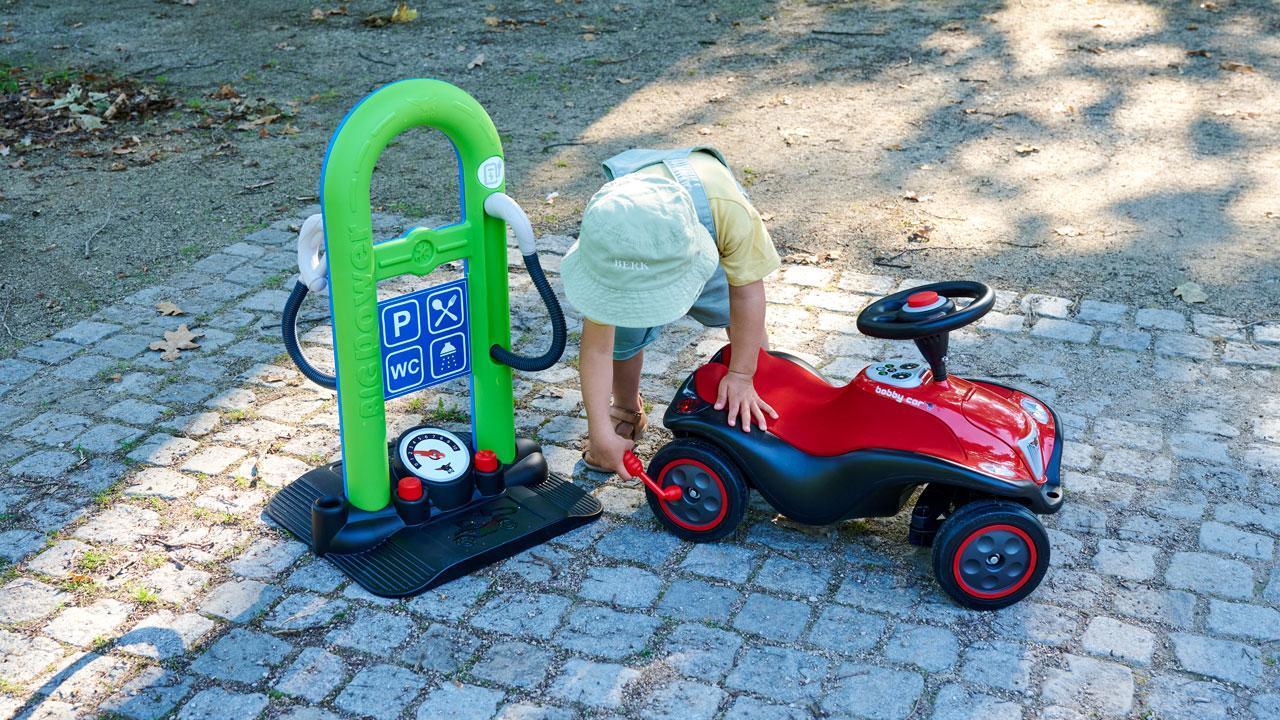
-
By
Vanessa M.
Why toys are so important for gross motor skills
Child development encompasses a wide range of important skills, including gross motor skills. This indispensable skill influences children's developmental progress in numerous other areas of competence and forms the basis for healthy growth and age-appropriate learning.
It is therefore essential to specifically promote gross motor skills at a young age, for example with toys for gross motor skills.
This article goes into detail about the great importance of gross motor skills for healthy child development and shows which toys are suitable for promoting gross motor skills.
What is meant by gross motor skills?
Motor skills are divided into two key areas: fine and gross motor skills. While fine motor skills are reflected in small, carefully coordinated movements, such as curling a finger or wiggling toes, gross motor skills are characterized by more extensive movements that involve the whole body or large parts of it. Actions such as crawling, walking, hopping, climbing stairs and climbing fall under this category and reflect gross motor skills.
It is important to emphasize that every child is unique and is on their own individual journey of motor development, always setting their own pace.
The promotion of gross motor skills, a crucial building block for holistic physical development, enables the child to organize their everyday life more independently as their skills increase. Suitable toys provide valuable support in training and strengthening these important skills in a playful way.
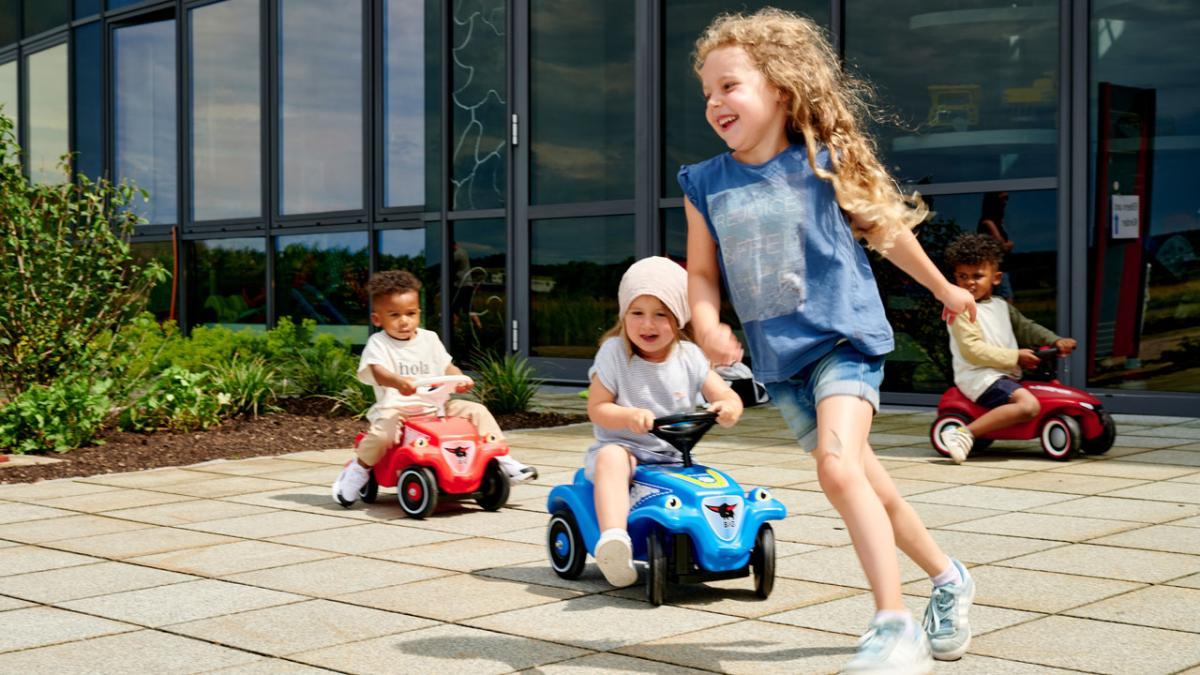
This is because toys for gross motor skills encourage children to try out different movements, refine their coordination and become physically active. If you want to promote gross motor skills in children without sacrificing fun, gross motor skills toys are therefore a useful tool. Many classic toys for gross motor skills are outdoor toys and climbing toys. Slides, swings, climbing frames and the like motivate kids to explore the movements they can make with their bodies and serve as the basis for action-packed games for gross motor skills. The same applies to sand and water toys: when splashing around, digging, building sandcastles or wading in the water, the focus is clearly on gross motor skills.
The role of gross motor skills in child development
Childhood is inextricably linked with play. In most children's lives, play is therefore a fixed part of everyday life from an early age - and that's a good thing! By consciously choosing meaningful, stimulating toys, you can support your child's development without having to create a separate space for it in the daily routine. By offering your child toys to promote gross motor skills and suggesting games for gross motor skills, you are integrating educational, stimulating activities into their everyday life. Of course, the fun doesn't fall by the wayside! On the contrary: gross motor skills games are extremely entertaining and show that playing and learning do not necessarily have to take place separately from each other. This makes it easy for you to encourage your child's gross motor skills on a regular basis. A clear advantage, because if gross motor development falls by the wayside, this quickly becomes a complex problem for children.
Exemplary effects of motor skills on independence and social competence
A child who is still crawling, even though all their peers are already walking and jumping, will not be able to play many a game in the kindergarten group. As a result, they will miss out on important experiences in the area of social interaction. On the other hand, healthy development of gross motor skills in children has a positive effect on the opportunities for training social skills and a number of other learning processes. A child with good gross motor skills learns time and again that they can master things on their own and rely on their body's abilities. This strengthens their self-confidence and gives them the courage to try things out on their own.
Motor milestones up to the age of 2
Gross motor development is, of course, a very individual matter. Nevertheless, we would like to give you a rough overview of the key gross motor development steps in the first two years of a child's life:
- 1 to 3 months: Lifting the head and moving the upper body
- 3 to 6 months: Lifting head and chest, supporting on forearms, rolling, sitting with help
- 6 to 9 months: Pulling up on furniture, crawling on the tummy
- 9 to 12 months: Sitting independently, crawling on elbows and knees, walking by hand
- 12 to 18 months: Standing independently, throwing with both hands
- 18 to 24 months: Independent walking, climbing single steps, dancing
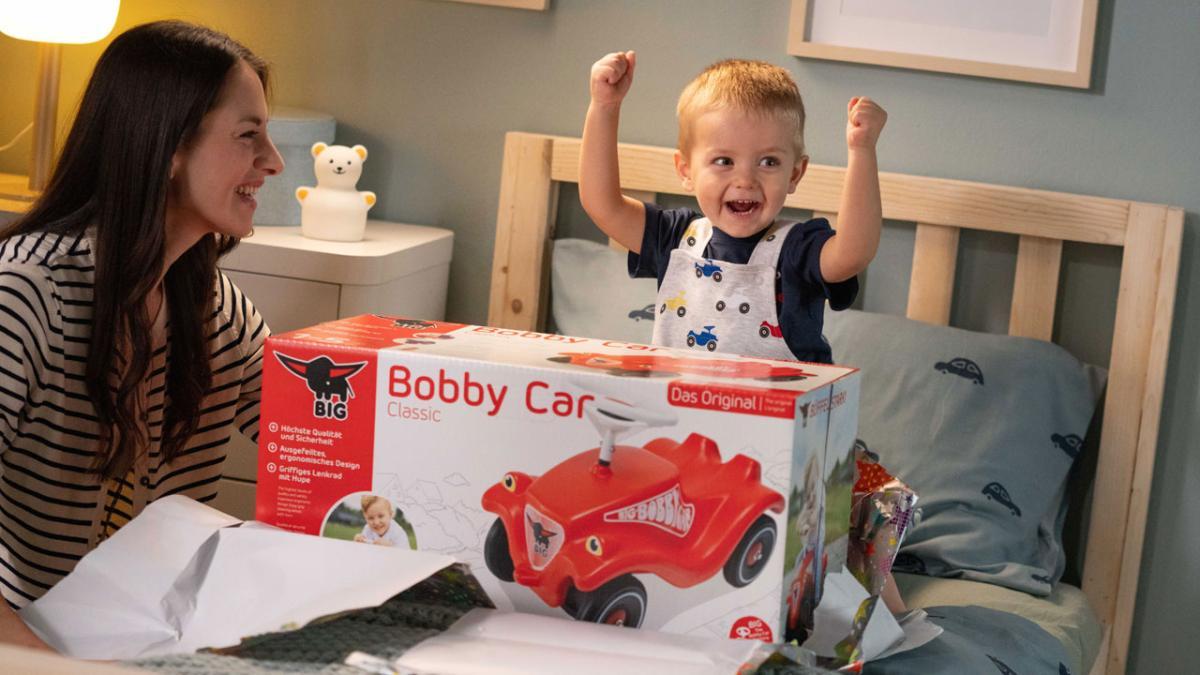
Promoting gross motor skills in children
For parents and teacherswho work with young children, early childhood development of gross motor skills is an important issue. They have the important task of showing children ways in which they can expand their gross motor skills in a playful and age-appropriate way. This is traditionally done through supervised movement games and fixed movement times in the daily routine. However, toys for gross motor skills that children can use alone or together are also an ideal way of effectively promoting gross motor skills.
In the BIG Shop you can get to know lots of gross motor skills toys for children of different ages. These include, among many others, the Bobby Car Classic bundle with push bar and trailer. The bright red slide car strengthens the leg muscles and provides fun training for the sense of balance. Other toys that are ideal for developing gross motor skills are balance bikes. They allow your child to explore their surroundings using their gross motor skills and improve their balance and coordination. The BIG range includes the Sport Bike balance bike, for example.
Recommended toys for gross motor skills
We have already briefly mentioned some of BIG's gross motor skills toys, but now we want to take a quick look at others. In the course of this, we would like to show that toys for gross motor skills open up exciting options for motor development both indoors and outdoors and come in a variety of types and shapes.
Promote gross motor skills with sand and water toys
Sand and water have a magical attraction for many children and are two ingredients that can fill hour after hour with playtime fun. When age-appropriate sand and water toys are added to the mix, this boosts gross motor development. Splashing, walking or splashing in the water as well as digging and digging in the sand require large movements that your child can perform repeatedly and gradually in an increasingly controlled manner. We can recommend our sand and water shell for outdoor sand and water fun. This toy for gross motor skills combines a sandpit and paddling pool in one appealing product that invites playful activity full of movement.
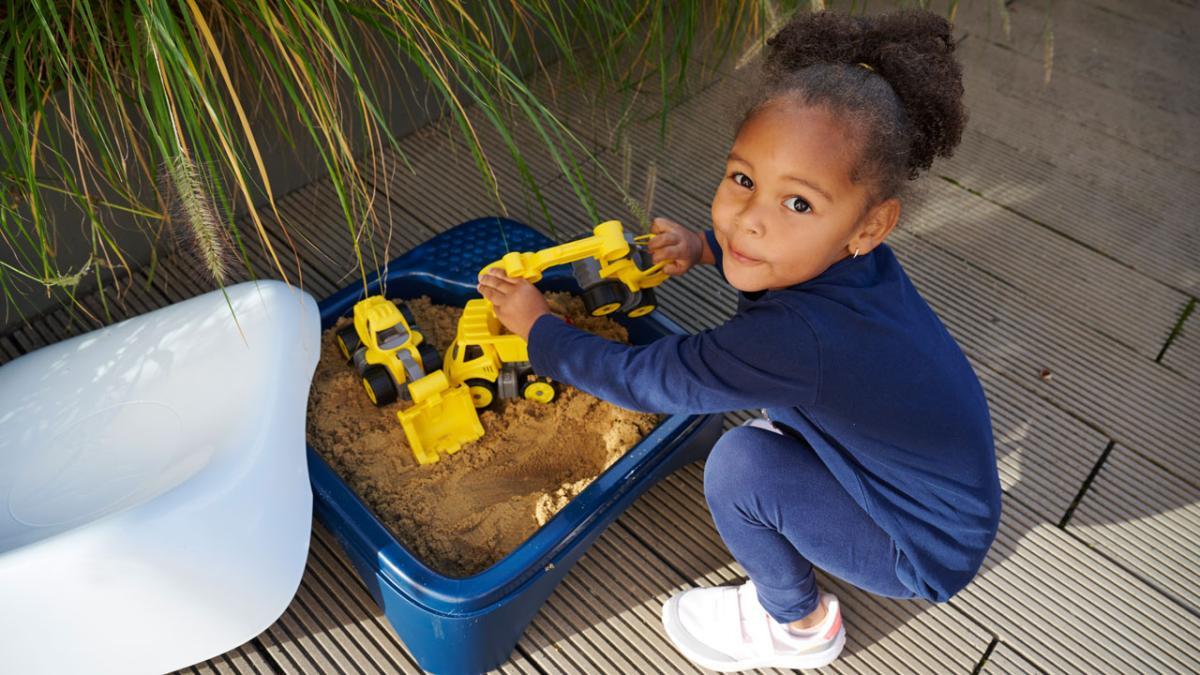
Rocking animals: animal fun for gross motor development
Toys with an animal design have always been very popular with children. Rocking animals, for example, promote gross motor skills. These are animals made of wood or plastic on which your child can sit comfortably and rock back and forth, which naturally stimulates gross motor skills. While some rocking animals are covered in fabric and are therefore more suitable for use indoors, others are ideal for rocking in the garden.
garden. Our elephant swing is a good example of a product that your child can use anywhere. The unusual seesaw in a cute elephant design is weatherproof and therefore provides a stimulating play experience both indoors and outdoors.
Outdoor and garden toys for playful outdoor learning
Are you mainly looking for toys that motivate your child to get more exercise in the fresh air? Then we can recommend outdoor & garden toys. This product category has a particularly large number of toys that promote motor skills. This is because motor skills are required both when climbing up and sliding down a slide and when playing in the large sandpit or bobbing together on the sturdy Sammy Rocker seesaw.
Children's vehicles: child-friendly vehicles for developing gross motor skills
Anything that has to do with climbing, height and being brave is magically attractive to children. BIG children's climbing toys are the ideal way to satisfy this need. When climbing the BIG Kraxxl tower, your child learns to place their feet and hands precisely and to move their own body weight.
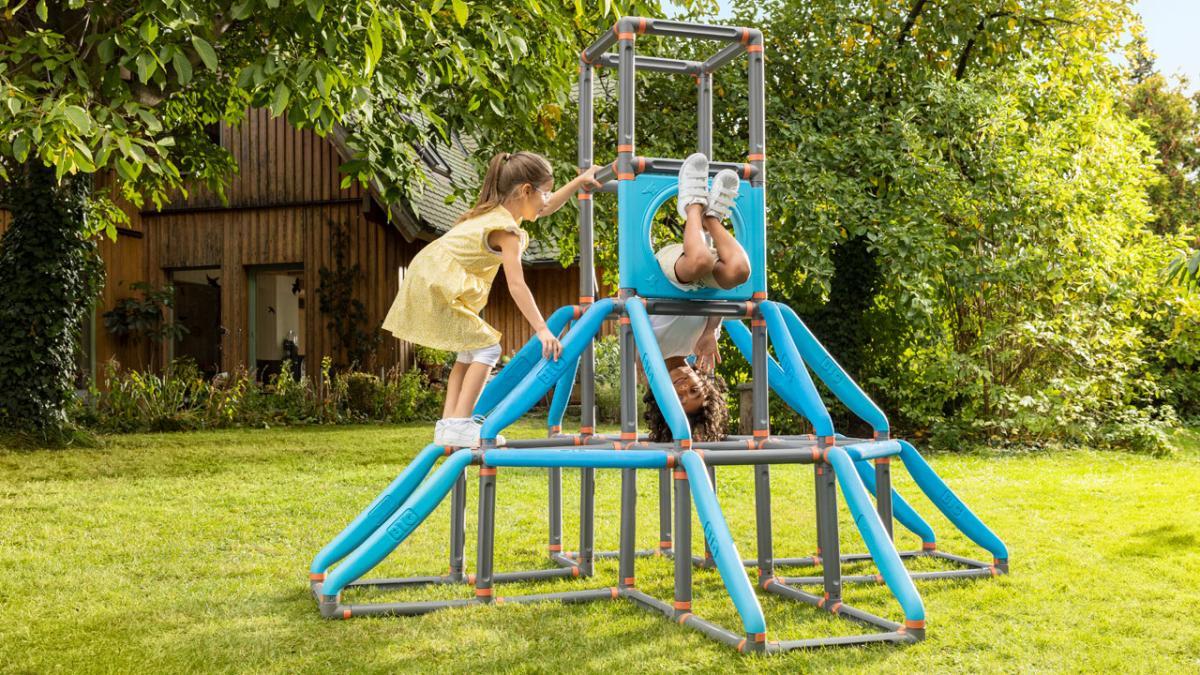
Conclusion: Toys for children's gross motor skills
What do rolling from stomach to back, sitting up, crawling, walking and dancing have in common? We'll tell you: these things build on gross motor skills. Practically speaking, you can help children develop gross motor skills quite easily with motor skills toys.
Toys that promote gross motor skills get your child moving, invite them to experiment with their own physical abilities and thus achieve a valuable developmental effect in a playful way. By consciously choosing gross motor skills toys - for example from the BIG Shop - you give your child's playtime a deeper meaning and set the course for great developmental progress.
If you would like to find out more about motor skills toys and the differences between fine and gross motor skills, we recommend our motor skills guide. We hope you enjoy reading it.

